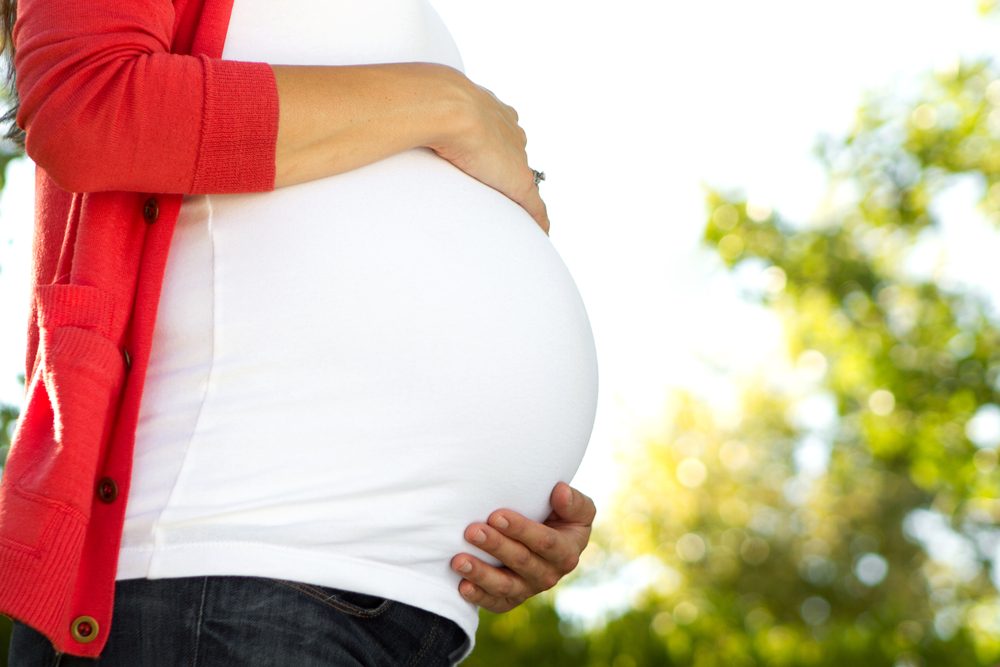Pregnancy Risks and Treatment Options for PAH Patients Outlined in Review

Although women with pulmonary arterial hypertension (PAH) are advised to avoid pregnancy, increasing numbers opt to tackle the risks to have a child. A recent review discussed the risks, and the best way to manage pregnancy in PAH.
The review, “Pregnancy in pulmonary arterial hypertension,” published in the journal European Respiratory Review, also underscored that although published data on the topic keeps increasing, there is a risk that scientists publish only cases with positive outcomes — a practice that could paint a picture that does not reflect the true risks of pregnancy in PAH.
Risks
During pregnancy, the body experiences extensive changes. Blood volume increases as blood pressure drops, but this increase in blood volume is not matched by an increase in oxygen-carrying red blood cells, and anemia is common. Molecular factors also make the blood coagulate more easily, and a fetus pressing on one of the larger veins in the body can reduce the blood flowing into the right ventricle of the heart.
All these factors place the heart of a healthy woman under more strain than usual. For a woman with PAH, the extra strain can become too much. The risk of death caused by right heart failure and stroke can, for these reasons, be high throughout pregnancy in PAH, and remain for a period once the baby is born.
The two researchers from Hannover Medical School in Germany and Massachusetts General Hospital underscored that it is important for a woman with PAH who gets pregnant to consider an abortion. Physicians should advise women on the risk of worsening disease, and if a woman chooses to end the pregnancy, data shows that early termination is the safer option.
They also emphasize that the risk of bleeding and the use of general anesthetics during delivery are linked to a higher risk of death in PAH patients.
PAH management during pregnancy
If a woman wishes to go through the pregnancy, the authors underscored that a multidisciplinary team should be responsible for her care. In addition to regular checkups with heart monitoring and optimization of medications, physicians should monitor the fetus. Growth abnormalities can be common in fetuses of PAH-affected mothers.
The review highlighted that certain factors have been linked in past studies to better pregnancy outcomes in PAH. A well-controlled condition and PAH-specific treatment may make a pregnancy safer. Likewise, disease poorly controlled by medications, and high pulmonary vascular resistance and blood pressure in the lung arteries are linked to greater risks.
With the exception of endothelin receptor antagonists, such as Tracleer (bosentan), guidelines recommend that women continue with their PAH treatment while pregnant. Although there are no controlled studies, an increasing amount of research suggests that calcium channel blockers, prostacyclins, and phosphodiesterase type-5 inhibitors, such as Revatio (sildenafil), are safe.
Tracleer may cause birth defects. Although a woman wishing to become pregnant should continue on Tracleer until a pregnancy is confirmed, the drug should be replaced with another treatment as soon as a pregnancy test comes back positive, the researchers said.
Since the blood has an increased tendency to form clots during pregnancy, treatment with anticoagulants may be an option. Vitamin K blockers, often used to prevent blood clots, should not be used. Rather, the review recommends that women are treated with low-molecular-weight heparins.
Women and their doctors should also pay attention to swelling of hands and feet, as this retention of fluid in the tissues may signal right heart failure. To reduce the risk of blocking the blood flow back to the heart’s right ventricle, women should avoid lying on their backs.
Diuretics — a class of drugs that reduce the amount of fluid in the body — may lower blood flow in the placenta, but if a woman is at high risk of heart failure, the drugs Torasemide (torsemide) and furosemide (sold as Furocot and Lasix) can be used. Aldactone (spironolactone), another diuretic, should be avoided.
Women with PAH tend to give birth prematurely, and treatment centers make it a priority to avoid women going into labor naturally. The reason for this is not medical, but a means of avoiding a woman with PAH giving birth during weekends and nights when less experienced staff is present.
Although women can give birth vaginally, doctors wish to trigger labor to better manage the timing. Vaginal birth has many good sides to it. There is a lower risk of blood loss, infections, blood clots and fewer abrupt changes in blood flow parameters compared to cesarean sections. But if the labor continues for an extended time, it can trigger changes that can be detrimental for the mother. Planned cesarean sections should be performed under regional anesthesia, when possible.
Throughout a pregnancy, physicians make a point out of controlling PAH before a woman gives birth. Since it is known that there is the risk of sudden PAH worsening during and after delivery, some centers start treatment with intravenous epoprostenol (brand names Flolan or Veletri) before, and continue the treatment for some time after, delivery. But this approach has not been evaluated, and it is unknown if it provides benefits.
The risk of death is actually highest in the time after delivery, so women should be closely monitored for up to several weeks, the review noted. Breastfeeding is not recommended for mothers with PAH, as drugs that dilate blood vessels pass to the milk and can harm the child.







